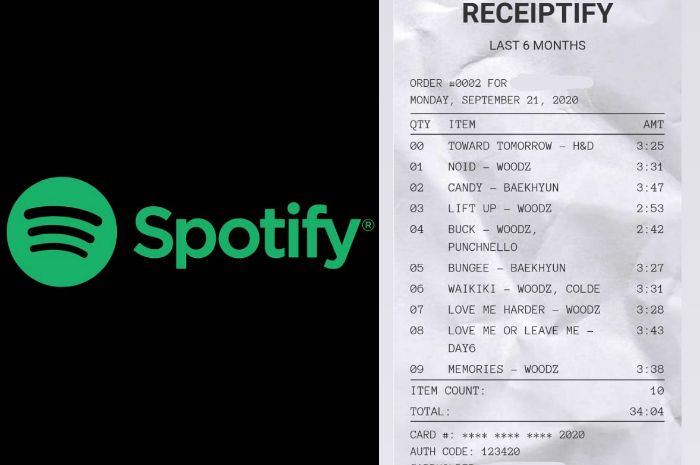


If a user is struggling to find where the Receiptify was saved, check the Files app in the ' Downloads' section. Selecting ' View' will open the image in the default browser, while selecting ' Download' will save the image to the Files app. The image will download as a file, so a pop-up window will appear asking the user if they want to view or download the image. This can be easily saved or shared to social media by pressing the ' Download Image' button directly underneath the Receiptify.

Some users may be asked to verify this with two-factor authentication, depending on their iCloud settings.Īfter the login process is completed, a Receiptify will be created showing the user's listening history in a receipt-style format. Apple Music users select the red button labeled ' Login with Apple Music,' and complete the login with an Apple ID. The login process is required to access the music listening data associated with a given account, but Receiptify's privacy policy reassures users that their data is not being stolen. The homepage will show three login options for Receiptify: Spotify, Last.fm, and Apple Music. To create a receipt-style record of a user's music listening history, navigate to the Receiptify web application. Related: How To Add Friends On Apple Music (And See What They're Listening To) The user experience with Spotify and Last.fm is stronger when compared to Apple Music, but the latter still provides an intuitive visualization of a user's music history. Additionally, it supports Last.fm, a separate service dedicated to accurately tracking listening history and trends in a user's music taste. It works with Spotify and Apple Music, and collects the listening history from the accounts connected to the respective streaming service. Though Receiptify is available to collect data from multiple music streaming platforms, the user experience isn't identical across the various supported platforms.


 0 kommentar(er)
0 kommentar(er)
